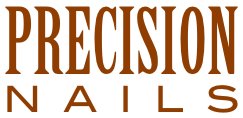Judging by the increasing number of salons marketed as “natural,” “organic” and “eco-friendly,” the pressure to appear “green” must be immense. My salon appears green; I painted both the exterior and interior beautiful, complimentary shades. But besides being my favorite color, and in the context of a nail salon, what exactly does “being green” mean? I don’t ask this question facetiously; in fact, I struggle with the entire concept. While the intent may be admirable (protecting the environment, conserving resources, preserving health, etc.), this concept has been distorted and abused through misinformation and fear mongering. Now, more than ever, clients ask questions like, “Is your polish toxic?,” while some manufacturers go so far as to promote their 1`products as “chemical-free.” How do we nail professionals differentiate fact from fiction? And how do we reconcile our responsibility to protect our clients with a desire to protect the environment?
Lacking a definitive standard based on empirical evidence, the concept of being green deserves careful consideration. This requires knowledge beyond the basic education and training most manicurists receive. That’s why I’ve enlisted three of the nail industry’s most respected chemists, Paul Bryson, Ph.D., Jim McConnell and Doug Schoon to provide their scientific expertise.
All three experts agree that manicurists need to better understand the structure and function of nails. In brief, Doug Schoon advises, “Be a knowledgeable professional.” Although beauty school would be the obvious and ideal place to learn this information, that apparently does not happen for many students. As Schoon points out, “Most nail techs can't even name the parts of the nail . . . How can you address concerns when you don’t understand the basics?”
Furthermore, manicurists “need to educate themselves on the products they use,” emphasizes Jim McConnell. Professional nail products contain chemicals that have been proven safe when used according to manufacturer instructions. That being said, you should never ingest nail products, rub them into your eyes or otherwise use them inappropriately. Any manufacturer claiming that its products don’t contain chemicals is simply being dishonest. Bryson reminds us of basic science, “It's impossible to make a product that is ‘chemical free,’ since everything around us - water, air, plants, foods, etc. - is composed of chemicals.” Likewise, any manufacturer claiming better/safer products because they’re made from some unlikely, yet more “natural” ingredients, cannot be trusted. McConnell expresses his frustration when mentioning a UV gel product supposedly made from seaweed.
Despite decades of safe use, nail products still raise safety concerns, leading to questions like “What’s the most dangerous chemical used in nail salons?” Acetone is a common response. But contrary to what many manicurists and consumers believe, “acetone is one of the safest solvents that we can work with in the salon,” according to McConnell. Bryson describes acetone emphatically as “the safest and greenest polish remover! All the acetone substitutes either produce more photochemical smog, and/or are more hazardous. ‘Non-acetone’ polish remover has long been dishonestly marketed as a safer product, but in fact the reverse is true . . ." Bryson singles out methyl acetate as “the only non-acetone polish remover solvent still legal in California,” but warns that it “could cause death or permanent blindness if a child drank it! The few companies that sell it use a bitter tasting additive to prevent accidental ingestion."
What about formaldehyde in nail polish? Schoon addresses this controversial chemical in a must-read article, The Formaldehyde Myth (available at www.schoonscientific.com). “Formaldehyde is not a cosmetic ingredient and never has been,” he states. Bryson acknowledges the understandable confusion about formaldehyde: “one of the main resins in nail polish is called ‘Tosylamide-Formaldehyde Resin,’ which despite the name, is not the same chemical as formaldehyde. Specialty nail hardeners are another story - they contain a small, US FDA-permitted amount of a non-volatile, reaction product of formaldehyde and water - more properly known as methylene glycol - or they won't work. Confusingly, until recently, this substance had to be called ‘Formaldehyde’ on the label, which wrought much customer confusion as they wrongly assumed that nail hardeners posed a cancer risk.”
Schoon further cautions against allowing ourselves and our clients to think in terms of what’s most dangerous, “If you remove an ingredient, then the next one on the list becomes the ‘most,’ until you have no chemicals to list. It is more important to ask, what should we do in nail salons to ensure that all products are used safely?”
The following suggestions will help you create a healthier salon environment:
- Protect the health and safety of yourself, your coworkers and your clients.
- Keep your salon clean.
- Follow applicable laws (state board, OSHA, etc.).
- Install an effective ventilation system.
- Read product labels and follow manufacturer’s instructions.
- Learn about product chemistry.
- Read product labels and follow manufacturer’s instructions.
- Obtain MSDS on every product.
- Store your products properly.
- Limit your exposure by wearing gloves.
- Wear protective eyewear.
- Utilize disposable products when necessary.
- Dispose of your waste safely.
- Make the most of the resources you use.
- Invest in bulk quantities.
- Encourage manufacturers to reduce packaging waste.
- Simplify your salon packaging and marketing materials.
- Purchase adequate liability & property insurance.
For more information about nails, nail products and salon safety, read Doug Schoon’s book, Nail Structure and Product Chemistry, Second Edition (Milady, 2005) and visit the website, www.schoonscientific.com for relevant articles and publications from the Nail Manufacturers Council.
By Jaime Schrabeck, Ph.D.





No comments:
Post a Comment